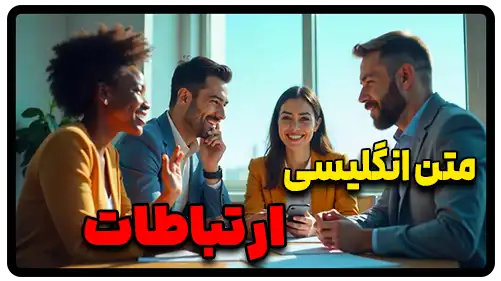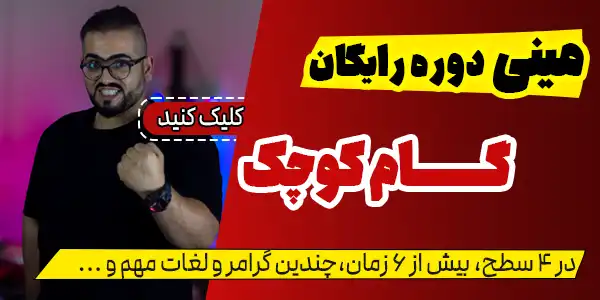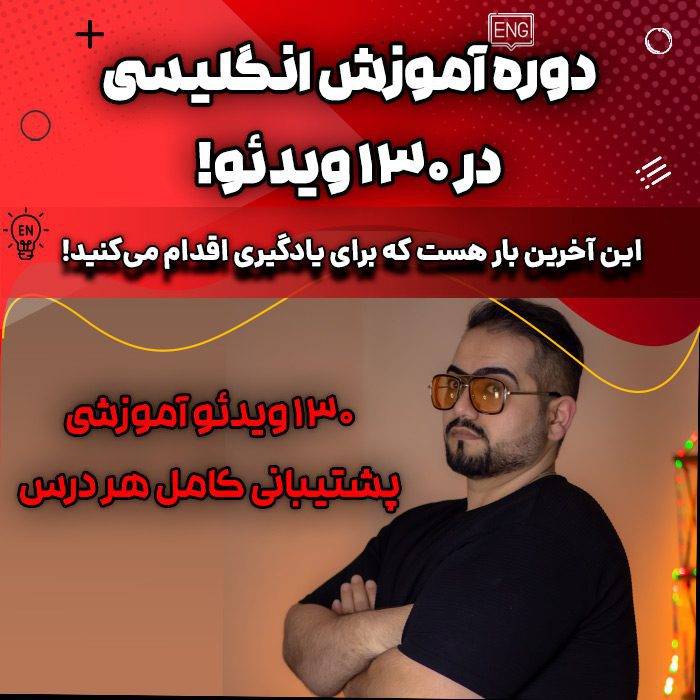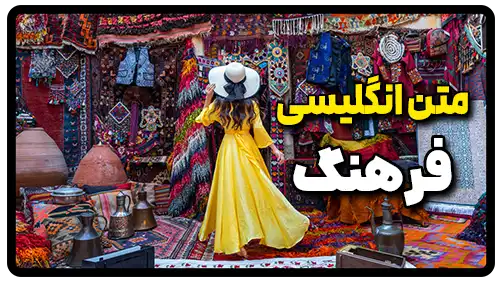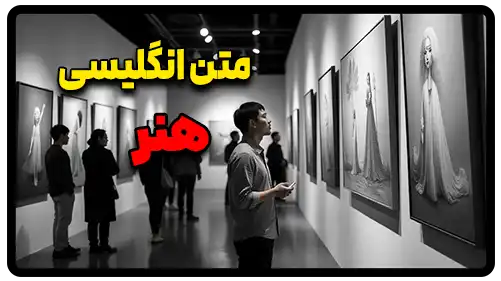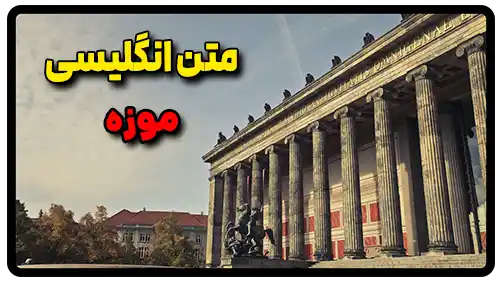در این آموزش رایگان زبان انگلیسی راسا زبان متن انگلیسی در مورد ارتباطات داریم و بریم این آموزش را از دسته آموزشهای متن انگلیسی رو باهم یاد بگیریم.
متن انگلیسی در مورد ارتباطات
بریم که متن انگلیسی در مورد ارتباطات رو داشته باشیم و کامل یاد بگیریم این قسمت رو و کلمات جدید یاد بگیریم.
Communication: The Foundation of Human Interaction
Communication is the cornerstone of human interaction, serving as the bedrock upon which relationships, societies, and civilizations are built. It is the process by which individuals exchange information, ideas, and emotions, transcending barriers of language, culture, and distance to foster understanding and connection.
At its core, communication encompasses a wide range of modalities, including verbal, nonverbal, written, and visual forms of expression. Verbal communication involves the use of spoken language to convey thoughts, feelings, and intentions, while nonverbal communication relies on gestures, facial expressions, and body language to communicate meaning. Written communication utilizes written symbols, such as letters, emails, and texts, to convey information over time and space, while visual communication employs images, symbols, and graphics to convey complex ideas and concepts.
Effective communication
is essential in all aspects of life, from personal relationships and social interactions to professional endeavors and community engagement. It serves as the foundation of healthy relationships, enabling individuals to express their needs, desires, and concerns openly and honestly while fostering empathy, trust, and mutual respect.
In the realm of business and organizations, communication plays a critical role in driving collaboration, innovation, and productivity. Clear and concise communication channels facilitate the exchange of ideas, feedback, and information among team members, enabling them to work together towards common goals and objectives. Effective communication also enhances leadership effectiveness, as leaders who communicate with clarity, authenticity, and empathy can inspire trust and motivate others to achieve their full potential.
In an increasingly interconnected and globalized world, communication serves as a bridge between diverse cultures, languages, and perspectives, fostering cross-cultural understanding, tolerance, and cooperation. With advances in technology and the rise of digital communication platforms, individuals can connect with others around the world instantaneously, breaking down barriers of time and space to engage in meaningful dialogue and exchange.
However,
despite its transformative power, communication is not without its challenges. Miscommunication, misunderstanding, and conflict can arise when messages are unclear, ambiguous, or misinterpreted, leading to breakdowns in relationships and organizational dysfunction. Effective communication requires active listening, empathy, and a willingness to engage in open and honest dialogue, even when opinions differ.
In conclusion, communication is the lifeblood of human interaction, serving as the foundation of relationships, societies, and civilizations. By fostering understanding, empathy, and connection, effective communication has the power to transcend boundaries, bridge divides, and unite us in our shared humanity. As we navigate the complexities of an ever-changing world, the ability to communicate effectively will remain essential in shaping a brighter future for generations to come.
ترجمه فارسی متن انگلیسی در مورد ارتباطات:
ارتباط: بنیان تعاملات انسانی
ارتباط، سنگ بنای تعاملات انسانی است و روابط، جوامع و تمدنها بر پایه آن شکل میگیرند. این فرایند تبادل اطلاعات، ایدهها و احساسات بین افراد است که با گذر از موانع زبان، فرهنگ و فاصله، درک و ارتباط را تقویت میکند.
در هسته خود، ارتباط شامل طیف گستردهای از روشها میشود، از جمله اشکال بیان شفاهی، غیرکلامی، نوشتاری و بصری. ارتباط شفاهی شامل استفاده از زبان گفتاری برای انتقال افکار، احساسات و اهداف است، در حالی که ارتباط غیرکلامی به حرکات، حالات چهره و زبان بدن برای انتقال معنا متکی است و نوشتاری از نمادهای نوشتاری مانند حروف، ایمیلها و پیامکها برای انتقال اطلاعات در طول زمان و مکان استفاده میکند، در حالی که ارتباط بصری از تصاویر، نمادها و گرافیک برای انتقال ایدهها و مفاهیم پیچیده استفاده میکند.
ارتباط مؤثر
در همه جنبههای زندگی، از روابط شخصی و تعاملات اجتماعی تا فعالیتهای حرفهای و مشارکتهای اجتماعی ضروری است. این امر به عنوان پایه روابط سالم عمل میکند و به افراد امکان میدهد نیازها، خواستهها و نگرانیهای خود را به طور آشکار و صادقانه بیان کنند، در حالی که همدلی، اعتماد و احترام متقابل را تقویت میکنند.
در حوزه کسبوکار و سازمانها، ارتباط نقش مهمی در پیشبرد همکاری، نوآوری و بهرهوری دارد. کانالهای ارتباطی واضح و مختصر، تبادل ایدهها، بازخورد و اطلاعات بین اعضای تیم را تسهیل میکنند و به آنها امکان میدهند برای دستیابی به اهداف و اهداف مشترک با هم همکاری کنند. ارتباط مؤثر همچنین اثربخشی رهبری را افزایش میدهد، زیرا رهبرانی که با روشنی، اصالت و همدلی ارتباط برقرار میکنند میتوانند اعتماد ایجاد کرده و دیگران را برای رسیدن به پتانسیل کامل خود انگیزه دهند.
در دنیایی که به طور فزایندهای به هم مرتبط و جهانی شده است، ارتباط به عنوان پلی بین فرهنگها، زبانها و دیدگاههای مختلف عمل میکند و درک متقابل فرهنگی، تحمل و همکاری را تقویت میکند. با پیشرفت فناوری و ظهور پلتفرمهای ارتباط دیجیتال، افراد میتوانند به طور آنی با دیگران در سراسر جهان ارتباط برقرار کنند و موانع زمان و مکان را برای مشارکت در گفتگوی معنادار و تبادل از بین ببرند.
با این حال،
علیرغم قدرت تحولبخش خود، ارتباط بدون چالش نیست. سوءتفاهم، سوءبرداشت و درگیری میتواند زمانی رخ دهد که پیامها نامفهوم، مبهم یا اشتباه تفسیر شوند و منجر به از بین رفتن روابط و اختلال عملکرد سازمانی شوند. ارتباط مؤثر نیازمند گوش دادن فعال، همدلی و تمایل به مشارکت در گفتگوی باز و صادقانه، حتی زمانی که نظرات متفاوت است، میباشد.
در نتیجه، ارتباط خون حیاتی تعاملات انسانی است و به عنوان پایه روابط، جوامع و تمدنها عمل میکند. ارتباط مؤثر با تقویت درک، همدلی و ارتباط، قدرت دارد تا مرزها را از بین ببرد، شکافها را پر کند و ما را در انسانیت مشترک خود متحد کند. همانطور که پیچیدگیهای دنیایی که دائماً در حال تغییر است را پیمایش میکنیم، توانایی برقراری ارتباط مؤثر همچنان در شکل دادن آیندهای روشن برای نسلهای آینده ضروری خواهد بود.
لکچر در مورد ارتباطات در انگلیسی:
در این قسمت آموزش متن انگلیسی در مورد ارتباطات ما لکچر در مورد ارتباط را باهم کار میکنیم.
Lecture: The Importance of Communication
Introduction
Communication is one of the most fundamental aspects of human life. It allows us to share ideas, express emotions, build relationships, and collaborate with others. Whether in personal relationships, professional environments, or social interactions, communication plays a crucial role in how we connect and influence each other.
What is Communication?
Communication is the process of exchanging information, thoughts, ideas, and emotions between individuals or groups. It can be verbal, non-verbal, written, or visual. Effective communication ensures that the message sent is received and understood as intended.
Types of Communication
- Verbal Communication:
– Spoken or written words are used to convey messages.
– Examples: Conversations, speeches, emails, text messages.
- Non-Verbal Communication:
– Communicating without words through body language, gestures, facial expressions, posture, and eye contact.
– Example: A smile can indicate friendliness, while crossed arms may show defensiveness.
- Visual Communication:
– Using images, symbols, or other visual aids to convey messages.
– Example: Diagrams, infographics, or road signs.
- Listening:
– A critical aspect of communication that involves understanding and processing the information received.
– Active listening helps in building trust and reducing misunderstandings.
The Communication Process
The communication process involves several key components:
- Sender: The person or entity who initiates the message.
- Message: The information or content being communicated.
- Medium: The channel through which the message is delivered (e.g., spoken words, written text, video).
- Receiver: The person or group who receives the message.
- Feedback: The response or reaction from the receiver, confirming whether the message was understood.
Barriers to Effective Communication
Many factors can impede communication and cause misunderstandings or misinterpretations:
- Language Barriers:
– Differences in language or vocabulary can make it difficult to understand the message.
– Example: A person using technical jargon may confuse someone unfamiliar with those terms.
- Cultural Differences:
– Different cultures have distinct communication styles, norms, and non-verbal cues.
– Example: In some cultures, direct eye contact is considered respectful, while in others, it may be seen as confrontational.
- Emotional Barriers:
– Stress, anger, or anxiety can distort the message or prevent clear communication.
– Example: An upset person may misinterpret a neutral comment as offensive.
- Physical Barriers:
– Environmental factors like noise, poor lighting, or distance can hinder communication.
– Example: Trying to hold a conversation in a noisy environment can lead to missed information.
- Perceptual Barriers:
– Personal biases, preconceived notions, or stereotypes can alter how we interpret messages.
– Example: If you have a negative opinion about someone, you might misinterpret their words negatively, even if they meant well.
The Role of Technology in Communication
Technology has dramatically transformed the way we communicate. Here are a few ways it has changed modern communication:
- Instant Messaging and Emails:
– They allow for quick and efficient exchange of information, regardless of geographical barriers.
- Social Media:
– Platforms like Facebook, Twitter, and Instagram enable people to connect globally, share ideas, and promote causes.
- Video Conferencing:
– Tools like Zoom and Skype allow real-time communication, making remote work and virtual meetings possible.
- Artificial Intelligence and Chatbots:
– AI-powered systems now interact with users, offering personalized responses and assistance.
Improving Communication Skills
Developing strong communication skills is essential for success in both personal and professional life. Here are some tips to improve communication:
- Practice Active Listening:
– Pay attention, avoid interrupting, and ask clarifying questions.
- Be Clear and Concise:
– Avoid using unnecessary jargon or complicated words. Keep your message simple and to the point.
- Be Aware of Non-Verbal Cues:
– Maintain eye contact, use appropriate body language, and be mindful of your tone of voice.
- Give and Receive Feedback:
– Constructive feedback helps improve communication and resolve misunderstandings.
- Adapt to the Audience:
– Tailor your message according to the audience’s level of understanding, cultural background, and context.
Conclusion
Communication is more than just exchanging information. It’s about understanding the emotion and intentions behind the information. Effective communication is key to building strong relationships, resolving conflicts, and achieving goals. As we continue to live in an increasingly interconnected world, the ability to communicate clearly and effectively becomes more important than ever.
ترجمه فارسی لکچر در مورد ارتباطات:
سخنرانی: اهمیت ارتباط
مقدمه
ارتباط یکی از اساسیترین جنبههای زندگی انسان است. این امکان را برای ما فراهم میکند تا ایدهها را به اشتراک بگذاریم، احساسات را بیان کنیم، روابط برقرار کنیم و با دیگران همکاری کنیم. ارتباط چه در روابط شخصی، محیطهای حرفهای یا تعاملات اجتماعی، نقش حیاتی در نحوه ارتباط و تأثیرگذاری ما بر یکدیگر دارد.
ارتباط چیست؟
خب باید بدانیم ارتباط فرایند تبادل اطلاعات، افکار، ایدهها و احساسات بین افراد یا گروهها است. میتواند شفاهی، غیرکلامی، نوشتاری یا بصری باشد. ارتباط مؤثر تضمین میکند که پیام ارسال شده دریافت میشود و همانطور که در نظر گرفته شده است، درک میشود.
انواع ارتباط
- ارتباط شفاهی:
- از کلمات گفتاری یا نوشتاری برای انتقال پیامها استفاده میشود.
- مثالها: مکالمات، سخنرانیها، ایمیلها، پیامهای متنی.
- ارتباط غیرکلامی:
- ارتباط بدون کلمات از طریق زبان بدن، حرکات، حالات چهره، وضعیت بدن و تماس چشمی.
- مثال: لبخند میتواند نشان دهنده دوستی باشد، در حالی که دستهای ضربدری ممکن است نشان دهنده دفاعی بودن باشد.
- ارتباط بصری:
- استفاده از تصاویر، نمادها یا سایر ابزارهای بصری برای انتقال پیامها.
- مثال: نمودارها، اینفوگرافیکها یا علائم راهنمایی و رانندگی.
- گوش دادن:
- یک جنبه حیاتی ارتباط که شامل درک و پردازش اطلاعات دریافتی است.
- گوش دادن فعال در ایجاد اعتماد و کاهش سوءتفاهمها کمک میکند.
فرایند ارتباط
فرایند ارتباط شامل چندین مؤلفه کلیدی است:
- فرستنده: فرد یا موجودی که پیام را آغاز میکند.
- پیام: اطلاعات یا محتوایی که ارتباط داده میشود.
- رسانه: کانال انتقال پیام (مثلاً کلمات گفتاری، متن نوشتاری، ویدیو).
- گیرنده: فرد یا گروهی که پیام را دریافت میکند.
- بازخورد: پاسخ یا واکنش گیرنده که تأیید میکند آیا پیام درک شده است یا خیر.
موانع ارتباط مؤثر
عوامل بسیاری میتوانند ارتباط را مختل کرده و باعث سوءتفاهم یا سوءبرداشت شوند:
- موانع زبانی: تفاوت در زبان یا واژگان میتواند درک پیام را دشوار کند.
- مثال: شخصی که از اصطلاحات تخصصی استفاده میکند ممکن است کسی را که با این اصطلاحات آشنا نیست گیج کند.
- تفاوتهای فرهنگی: فرهنگهای مختلف دارای سبکهای ارتباطی، هنجارها و نشانههای غیرکلامی متمایز هستند.
- مثال: در برخی فرهنگها، تماس مستقیم چشمی محترمانه تلقی میشود، در حالی که در برخی دیگر ممکن است به عنوان مقابلهجویانه دیده شود.
- موانع عاطفی: استرس، عصبانیت یا اضطراب میتواند پیام را تحریف کرده یا ارتباط واضح را مانع شود.
- مثال: یک فرد ناراحت ممکن است یک نظر بیطرفانه را به عنوان توهین تفسیر کند.
- موانع فیزیکی: عوامل محیطی مانند سر و صدا، نور ضعیف یا فاصله میتوانند ارتباط را مانع شوند.
- مثال: تلاش برای انجام مکالمه در یک محیط پر سر و صدا میتواند منجر به از دست دادن اطلاعات شود.
- موانع ادراکی: تعصبات شخصی، تصورات از پیش تعیین شده یا کلیشهها میتوانند نحوه تفسیر پیامها را تغییر دهند.
- مثال: اگر نظر منفی در مورد کسی دارید، ممکن است کلمات او را به طور منفی تفسیر کنید، حتی اگر نیت خوبی داشته باشند.
نقش فناوری در ارتباط
فناوری نحوه ارتباط ما را به طور چشمگیری متحول کرده است. در اینجا چند روش تغییر ارتباط مدرن توسط فناوری آمده است:
- پیامرسانی فوری و ایمیلها: آنها به تبادل سریع و کارآمد اطلاعات، صرف نظر از موانع جغرافیایی، اجازه میدهند.
- رسانههای اجتماعی: پلتفرمهایی مانند فیسبوک، توییتر و اینستاگرام به افراد امکان میدهند تا در سطح جهانی ارتباط برقرار کنند، ایدهها را به اشتراک بگذارند و از علل حمایت کنند.
- کنفرانسهای ویدیویی: ابزارهایی مانند Zoom و Skype به ارتباط بلادرنگ اجازه میدهند و کار از راه دور و جلسات مجازی را ممکن میسازند.
- هوش مصنوعی و چتباتها: سیستمهای مبتنی بر هوش مصنوعی اکنون با کاربران تعامل دارند و پاسخها و کمکهای شخصی ارائه میدهند.
بهبود مهارتهای ارتباطی
توسعه مهارتهای ارتباطی قوی برای موفقیت در زندگی شخصی و حرفهای ضروری است. در اینجا چند نکته برای بهبود ارتباط آمده است:
- گوش دادن فعال را تمرین کنید: توجه کنید، از قطع کردن خودداری کنید و سؤالات شفافکننده بپرسید.
- واضح و مختصر باشید: از استفاده از اصطلاحات تخصصی یا کلمات پیچیده خودداری کنید. پیام خود را ساده و سر راست نگه دارید.
- از نشانههای غیرکلامی آگاه باشید: تماس چشمی برقرار کنید، از زبان بدن مناسب استفاده کنید و مراقب لحن صدای خود باشید.
- بازخورد بدهید و دریافت کنید: بازخورد سازنده به بهبود ارتباط و حل سوءتفاهمها کمک میکند.
- با مخاطب خود سازگار شوید: پیام خود را با توجه به سطح درک، پیشینه فرهنگی و زمینه مخاطب تنظیم کنید.
نتیجهگیری
ارتباط بیش از تبادل اطلاعات است. این در مورد درک احساس و نیت پشت اطلاعات است. ارتباط مؤثر کلیدی برای ایجاد روابط قوی، حل تعارضات و دستیابی به اهداف است. با ادامه زندگی در دنیایی که به طور فزایندهای به هم مرتبط است، توانایی برقراری ارتباط واضح و مؤثر بیش از هر زمان دیگری اهمیت مییابد.
جمعبندی: متن انگلیسی در مورد ارتباطات
اگه این آموزش رو دوست داشتید حتما در قسمت نظرات مشارکت کنید و نظر خودتان رو بنویسید و برای آموزشهای جالب کوتاه اینستاگرام راسا زبان رو دنبال کنید!
سمت راست بالاترین امتیاز است! چپ کمترین!
میانگین امتیاز تعداد آرا
تا به حال رای داده نشده است. اولین نفر باشید!

